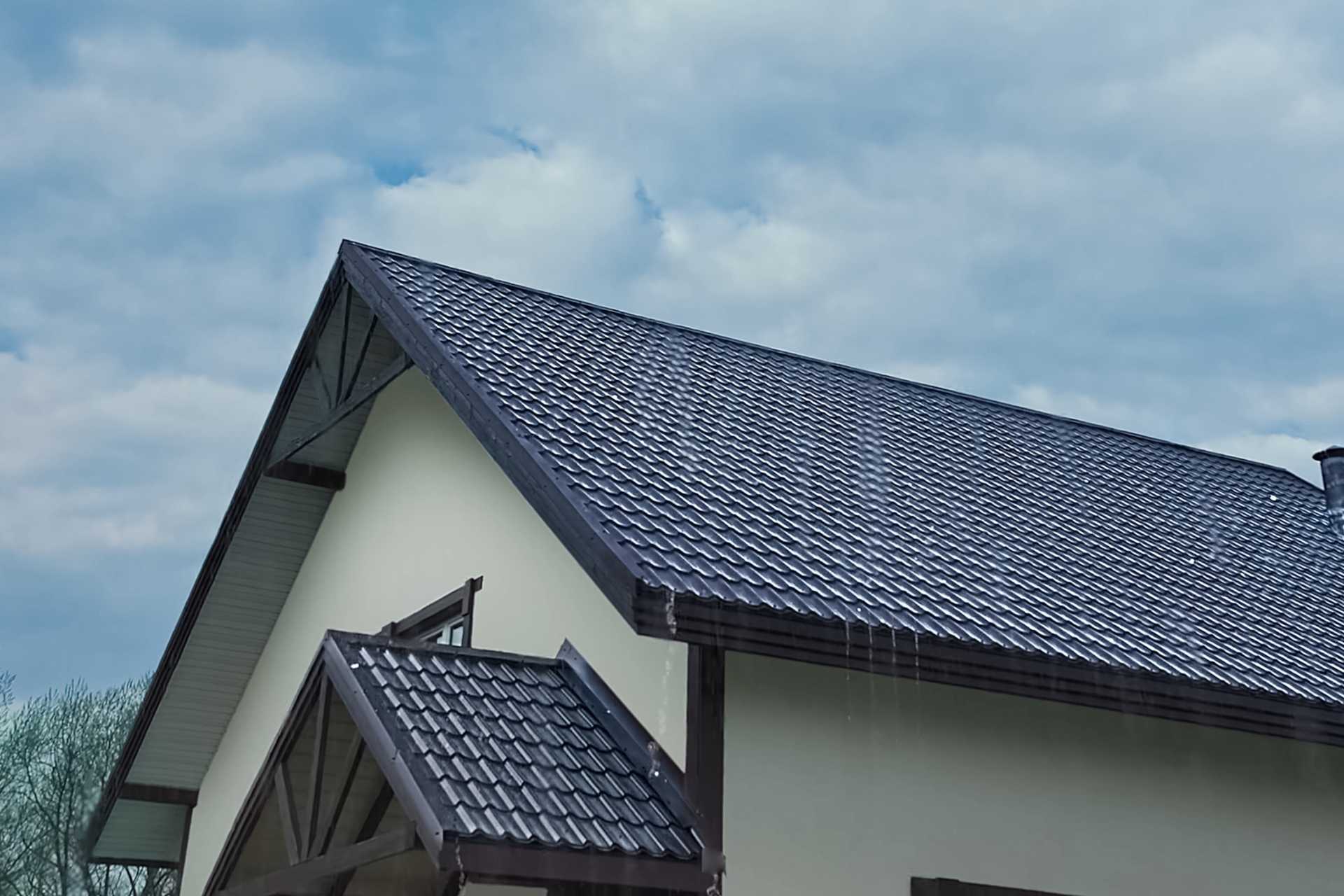
The first sign of a water problem is often small, like a stain on the ceiling or a musty smell after rain. It is tempting to blame a single cause, such as a faulty window seal or a loose shingle. However, a home’s defence against water is a sophisticated, top-to-bottom system, not just one component. When homeowners find a leak, they might call for a window replacement or new roofing. But without understanding the connection between the two, they may only be fixing a symptom, not the root cause. The roof and windows are a team, designed to work in tandem. This post will explore this vital connection, showing how a strong roof defends from above while sealed windows guard the sides, and how neglecting either part can lead to a cascade of water damage.
The Roof: Your Home’s Primary Shield
The roof serves as the home’s primary shield, bearing the brunt of precipitation and managing massive volumes of water quickly and efficiently. The slope, shingles, and underlayment all work together as the first line of defence, channelling water downwards into the drainage system before it has a chance to penetrate the structure. This system is designed to handle the main onslaught of a storm, protecting the more vulnerable components below, like walls and windows, from being overwhelmed. A well-maintained roof is the cornerstone of a dry and healthy home, acting as the guardian that deflects the vast majority of potential moisture intrusion.
Integral to this system is the flashing. These thin pieces of metal, installed around chimneys, vents, and in roof valleys, are crucial for proper water management. Drip-edge and step flashing are particularly important as they guide water away from the edges and walls, protecting the areas directly above and around windows. The gutters handle the final step in the roof’s job. They collect all the water shed by the roof and direct it safely away from the home’s siding and foundation. This is one reason why regular roof maintenance is important: it plays a crucial role in protecting windows and other vulnerable areas from costly water damage. A failure in the gutter system can render even the best windows defenceless.
Windows: The Guardians of the Walls
While the roof handles falling water, windows are engineered to resist water being pushed sideways by powerful, wind-driven rain. This is where a window’s seals, weatherstripping, and exterior caulking become crucial. A tight, continuous seal prevents water from being forced between the sash and the frame, or between the frame and the wall opening. However, a high-quality window is only as effective as its installation. A properly installed window is integrated into the home’s weather-resistant barrier with a waterproof membrane and its own flashing system, creating a seamless, multi-layered seal around the entire opening that blocks moisture at every potential entry point.
Beyond defending against external rain, high-quality, multi-pane windows also prevent moisture damage that originates from the inside. In colder climates, warm, moist indoor air can condense on the cold surface of a single-pane window. This condensation can saturate wooden sills, damage surrounding drywall, and create an ideal environment for mould growth. Modern, energy-efficient windows with multiple panes and inert gas fills keep the interior pane of glass closer to room temperature, drastically reducing or eliminating condensation. This internal defence is a critical, often overlooked, aspect of how windows protect the home’s structure from moisture.
The Weak Link: How a System Failure Occurs
Your roof and windows are a team; they depend completely on each other. If one system fails, it puts the other at direct risk. Think of it as a relay race for rainwater. The roof handles the first and longest leg, catching the bulk of the water and passing it to the gutters. The windows are only designed to handle the water that hits them directly. But if the roof springs a leak or the gutters get clogged, the whole system breaks down. Creating a weather-ready home means protecting it from water. This requires your roof and windows to work together as a seamless team. A single weak link in this defensive chain is all it takes for water to get in.
This chain reaction is easy to visualize. Consider a gutter clogged with autumn leaves. During the next heavy rain, water overflows its banks and cascades directly down the siding, constantly soaking the top of the window below. Even a perfectly sealed, brand-new window will eventually fail under this constant, concentrated assault. The caulking will degrade, the seals will be breached, and water will get in, leading to a leak that appears to be a “window problem” but was actually caused by a roof system failure. Conversely, a window with old, cracked caulking allows a small amount of water to penetrate the wall with every rainstorm. It is not a flood, but a slow, persistent drip that gets absorbed by the wall below, initiating a different but equally destructive sequence of water damage.
The Domino Effect: Tracing the Path of Water Damage
Once a breach occurs in the roof-window system, water begins a devastating domino effect. After getting past the siding and sheathing, it enters the wall cavity, a space where it can remain trapped and hidden for months or even years. Here, it soaks the insulation, causing it to compress and slump. This not only renders the insulation useless, creating cold spots and driving up energy bills, but the damp material also becomes a breeding ground for mould and mildew, which can severely impact indoor air quality.
From the insulation, the water continues its downward path, rotting the wooden studs and, most critically, the sill plate that rests directly on the foundation. As this essential structural component softens and decays, it can no longer properly support the weight of the wall above, leading to sagging and settling. The final stage of this destructive journey is the assault on the foundation. Water pooling around the rotted sill plate seeps down, saturating the soil or even penetrating the porous concrete. In colder climates, this leads to the destructive freeze-thaw cycle, where trapped water expands as it freezes, creating and widening cracks in the foundation itself.
A Unified Defence for a Secure Home
A healthy home needs a sound roof to handle the bulk of rainwater. It also needs well-sealed windows to protect the walls. These are not separate issues; they are two parts of one essential system. The most effective strategy is to maintain both systems together. For example, when your gutters are cleaned, inspect the caulking on the windows below. If you are planning a window replacement, ask the installer to check the drip cap flashing above it.
Smart homeownership means recognizing the value of this team approach. In fact, tackling both roofs and windows together ranks as one of the top renovations with the best ROI. This renovation combination reduces water damage risks and boosts property value. Do not wait for a water stain to appear before you act. By keeping both your roof and windows in top condition, you build a fortress against moisture. This protects your home completely, from the top down and from the outside in.








